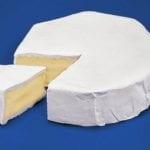This page aims to explain the main differences in groceries sold in the US and Czech Rep. to make grocery shopping easier.
Measuring Units
In the Czech Republic and the rest of Europe (except for the UK) the metric system is used. You can use an online Unit Converter or Google. Weight is measured in grams (g), decagrams (dkg) = 10g and kilograms (kg) = 1000g. One kilogram is an equivalent of 2.2 lb. Volume is measured in mililitres (ml), decilitres (dl), centilitres (cl) and litres (l). One litre is an equivalent of 33.8 fluid ounces or 4.2 cups.
Fruit and Veg
Supermarkets offer a wide range of produce in season. If you’re looking for any produce that’s not in season at the moment, try stores such as Delmart or Marks & Spencer. Farmer’s markets are a great option for getting fresh in-season local produce.
Dairy
Butter = Máslo
Butter in the Czech Republic is unsalted by default and sold most often in 250g (0.55 lb) blocks. Other fats are sold in similar packaging: Margarine = Margarín or Rostlinný tuk (most common brands are Hera, Rama and Perla) Baking fat (plant based) = Tuk na pečení
Milk = Mléko
This is where it gets a little confusing. There are multiple types of milk sold in Czech shops. They come in both boxes/cartons and plastic or glass bottles. Generally boxed milk is “trvanlivé” = long lasting (pasteurized), whereas the bottled milk is “čerstvé” = fresh and has to be consumed within a couple of days. Both the milk cartons and bottles are recyclable – please make sure to rinse them before throwing them into the recycling bin. These are the most common options: Polotučné mléko = Reduced fat milk (1.5% of fat) Plnotučné mléko = Whole/Regular milk (3,5% of fat) Odtučněné mléko = Low-fat or Fat-free milk (0-0,5%). Besides milk, there are a number of other liquid dairy products that come in a similar packaging: Kefírové mléko/Kefír = Kefir (a fermented milk drink), Podmáslí = Buttermilk, Jogurtové mléko = Yoghurt milk
Cream = Smetana
Cream comes in both cartons and plastic pots. Here are the two most common types: Smetana na vaření = Light Cream (10-12% fat), Smetana ke šlehání = Whipping Cream (30-40%), Kysaná/Zakysaná smetana = Sour Cream
Cheese = Sýr
You can buy pre-packaged cheese in either tubs, blocks or slices in supermarkets, or there are frequently deli sections where you can ask for a specific amount of cheese or other goods such as spreads. The weight is measured in grams or decagrams. Cream cheese = Krémový sýr (Most common brands – Lučina, Gervais, you can find plain cream cheese = přírodní or flavored with herbs = bylinky, garlic = česnek etc.) Goat cheese = Kozí sýr, Sheep cheese = Ovčí sýr. The most common cheese you’ll find is definitely Eidam (similar to Dutch Edam). The two most common types are the 30% and the 45% type. This is also the cheese you’ll get fried in restaurants. Cheeses like mozarella and parmesan are available at all supermarkets. For a higher quality Cheddar, and other cheeses, you can go either to specialty shops like Marks & Spencer or Delmart or to cheese shops, such as Cheeshouse, Holandský Kluk or Cheesy.
Typical Czech dairy products
Tvaroh = Quark
A typical central-European dairy product similar to curd or cottage cheese. Comes either in a soft creamy spreadable consictency or hard blocks ideal for grating. It is used very frequently in Czech cuisine, especially in sweet baked goods or sweet dishes, such as ovocné knedlíky (fruit dumplings). It is also great as a spread or with granola instead of yoghurt. 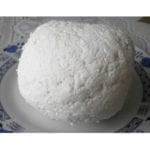
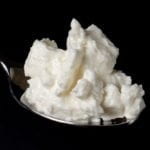
Pomazánkové máslo
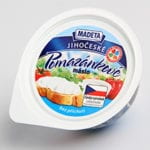 Spreadable creamy cross-breed between butter and cream cheese is a Czech favorite. Czechs use Pomazánkové máslo instead of butter on bread or in various recipes. It comes in tubs and you can buy the plain or flavored version in most supermarkets.
Spreadable creamy cross-breed between butter and cream cheese is a Czech favorite. Czechs use Pomazánkové máslo instead of butter on bread or in various recipes. It comes in tubs and you can buy the plain or flavored version in most supermarkets.
Pribináček
or Bobík / Lipánek  Say Pribináček in front of any Czech person and they will immediately start reminiscing about their childhood. This sweet whipped creamy dairy product is consumed mainly (but not only) by kids as a snack.
Say Pribináček in front of any Czech person and they will immediately start reminiscing about their childhood. This sweet whipped creamy dairy product is consumed mainly (but not only) by kids as a snack.
Hermelín
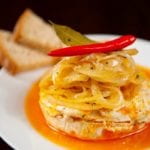 Czech cheese similar to Brie or Camambert. You can eat it as is or it is great grilled, the most popular way of eating hermelín in the Czech republic is the pickled version though. Most pubs have their rendition of the nakládaný hermelín dish – the cheese is marinated in oil with onions, garlic and spices for a few days and served with fresh sourdough bread.
Czech cheese similar to Brie or Camambert. You can eat it as is or it is great grilled, the most popular way of eating hermelín in the Czech republic is the pickled version though. Most pubs have their rendition of the nakládaný hermelín dish – the cheese is marinated in oil with onions, garlic and spices for a few days and served with fresh sourdough bread.
Tvarůžky
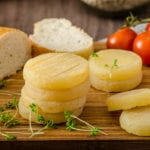 You either love these or you hate them. This extremely fragrant (many say smelly) cheese is produced in the town of Olomouc.
You either love these or you hate them. This extremely fragrant (many say smelly) cheese is produced in the town of Olomouc.
Niva
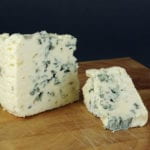 This blue cheese is a very popular equivalent of cheeses such as Roquefort or Gorgonzolla.
This blue cheese is a very popular equivalent of cheeses such as Roquefort or Gorgonzolla.
Grains and Baked Goods
Baking products
Flour = Mouka
There are multiple types of flour available in the Czech republic. The most common type is wheat flour and it is sold in three different varieties depending on the texture. Hladká mouka = smooth or fine flour, the equivalent of all-purpose flour Polohrubá mouka = semi-coarse flour, used most often for Czech baked goods Hrubá mouka = coarse flour used for bread dumplings for instance Other types: Krupice = Semolina Celozrná mouka = Whole-grain flour Chlebová mouka = Bread flour Špaldová mouka = Spelt flour Kukuřičná mouka = Corn flour Self-raising flour is not available in supermarkets, but you can buy it for example in Marks & Spencer stores.
Other Baking Ingredients
Baking Powder = Kypřící prášek Baking Soda = Jedlá soda Corn starch = Kukuřičný škrob Yeast = Droždí Sugar = Cukr (powder = moučka, granulated = krupice, coarse = krystal, brown = hnědý)
Baked Goods
Czechs love bread and baked goods, so it is no wonder that you can get these not only in supermarkets but also in one of the many bakeries around Prague. Try Antonínovo Pekařství, which has shops close to both Máchova, Slezská and Osadní dorms and offers gluten-free bread as well, or any other bakery, which is never far away. The most common baked goods you will find in Czech stores and bakeries are the following:
Chléb/Chleba = Sourdough bread
(Sometimes called “Šumava”) 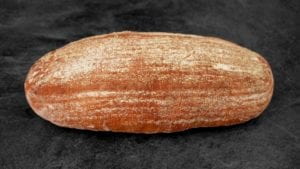 In most bakeries you can either buy a whole loaf or ask them to cut you a half or quarter of it.
In most bakeries you can either buy a whole loaf or ask them to cut you a half or quarter of it.
Rohlík = Roll
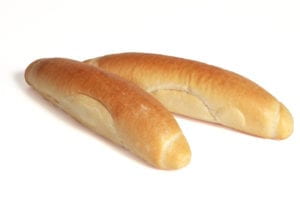 Crispy on the outside, soft on the inside, this is a Czech favorite.
Crispy on the outside, soft on the inside, this is a Czech favorite.
Houska = Bread Roll
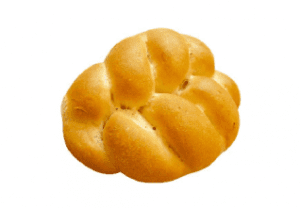 Made from similar dough as rohlík, often topped with grains of salt, poppy seeds or caraway seeds. For a more extensive list of Czech bread-related baked goods see this article.
Made from similar dough as rohlík, often topped with grains of salt, poppy seeds or caraway seeds. For a more extensive list of Czech bread-related baked goods see this article.
Typical Czech Sweet Baked Goods
Most Czechs have memories of their moms or grandmas baking sweet treats like buchty and koláče on the weekends, to find out what these are and learn about more types of Czech meals, check our list of typical Czech foods and sweets on the Czech Cuisine page.
Meat
Meat = Maso
You can buy packaged meat in most supermarkets and some bigger ones also have a special fresh meat section. There are also a number of butcher’s (řeznictví) around Prague, where you can buy fresh meat as well as smoked and cured meat. The most famous ones are Naše Maso in Dlouhá or the Real Meat Society. Chicken = Kuřecí Turkey = Krůtí Pork = Vepřové Beef = Hovězí Veal = Telecí Lamb = Jehněčí Venison = Zvěřina Rabbit = Králičí
Fish and Seafood
Fish = Ryby
Even though Czech Republic is a landlocked country and sea fish have to be imported and are therefore more expensive, there is a range of fresh-water fish that you can buy in stores. There are also specialized stores selling fish and seafood. Trout = Pstruh Carp = Kapr Pike = Štika Salmon = Losos Cod = Treska Seabass = Mořský Vlk Mackerel = Makrela
Seafood = Mořské plody
You can buy frozen seafood in most supermarkets. For fresh sea food, you can go to one of the fish shops in Prague, e.g. Fishway.

